

S TORY ON PAGE STORY 3 Vol. 50 No. 10• The Journal For Community News, Business & The Arts • insightnews.com Vol 50 No 10• The Journal For News, Business & The Ar ts • insightnews com March 6, 2023 - March 12, 2023 March 6 2023 - March 1 2 2023 INSIGHT NEWS IS AUDITED BY THE ALLIANCE FOR AUDITED MEDIA TO PROVIDE OUR ADVERTISER PARTNERS WITH THE HIGHEST LEVEL OF MEDIA AS SURANCE. I N S I G H T N E W S I S A U D I T E D B Y T H E A L L I A N C E F O R A U D I T E D M E D I A T O P R O V I D E O U R A D V E R T I S E R P A R T N E R S W I T H T H E H I G H E S T L E V E L O F M E D I A A S S U R A N C E Insight News News
2. That the Governor hold his appointed State Commissioners and the state departments they lead accountable for measurable and reportable processes and strategies to eliminate disparities that exist in and that are supported by policies and procedures of state governance.
3. That the Minnesota Legislature prioritize intentional solution making that can occur when Legislators, Committee Chairs and Committees engage Minnesota’s Black community at the table of decision.
4. Housing Invest now in multiple housing options for the Black community to close the home ownership gap.
Multiple housing options are an important part of any community. It provides a safe and affordable place for people to live and can help reduce poverty and homelessness. However, there are many challenges associated with providing low-income housing, such as limited resources, high demand, and the need to ensure that the housing is safe and secure. Minneapolis has one of the widest homeownership gaps in the country between whites and Blacks.
businesses among all races do not receive any outside investors. Most people use the equity in their homes to start their firms. This is a huge disadvantage to Black folks in Minnesota because of the home ownership gap. Further, the report stated that minority owned businesses experience higher loan denial probabilities and pay higher interest rates than white-owned businesses even after controlling for differences in credit-worthiness, and other factors. Limited access to investment capital in its many forms is inextricably linked to systemic discrimination in lending, housing, and employment. It cripples Black business development.
2. Employment Invest now in creating employment opportunities for the Black community
In an article published by the Urban Institute, the issue of Black employment was addressed.



It stated that, “while many are heralding the drop in the national Black male unemployment rate, which recently fell below 10 percent for the first time in seven years, joblessness remains much higher in many poor African American communities. It stated that for many low-income Black men, finding and keeping work is a constant struggle, never far from their minds. Black job applicants might not even make it into the queue if they have had an encounter with the criminal justice system. Helping Black folks secure steady employment at decent wages will require resources to break down the institutional barriers that separate people from decent job opportunities and to enable Black people to build the skills needed for well-paying jobs
3. Public Safety
Invest now in Public Safety in the Black community.
Public safety exists to protect citizens, organizations, and communities by preventing them from being in danger and guarding their well-being. Abraham Maslow defined safety in his famous “Hierarchy of Human Needs“. He said that to function as a society public safety is needed. He said this safety goes beyond just physical safety but also safety when it comes to health, money, possessions, and family. Less we forget, there’s an Emotional Impact on Public Safety. When folks feel unsafe, it could have major effects on individuals, their loved ones, and the community they live in. Violence has been way to prevalent in the inner cities of Minneapolis and St. Paul. Playgrounds are unsafe, the streets are unsafe, and the shopping malls are unsafe.
5. Education
Invest now in ensuring that our Black students are educated at the same level as White students.
Dr. Sinclair Grey lll stated that education is without a doubt crucial to the success of our students competing for jobs. Quality education that enforces and reinforces math, science, writing, and cognitive thinking will separate those who desire a prosperous future from those who are simply content with getting by. Yet, in Minnesota, reading test scores for Black students are over 20 points below state average and math test scores are 20 points below state average. Minnesota ranks 50th in the nation for Black students who graduate on time. Minnesota has one of the worst college-readiness gaps in the nation by race and ethnicity – only 25% of Black students are prepared for college. Thus, Black students who attend college must take significantly more remedial courses than their peers as their starting point.
6. Health & Wellness
Invest now in efforts that will impact the health and wellness of the Black community. The Black community is faced with escalating social, economic, and life-style problems, which threaten the life and well-being of current and future generations of Black people in crisis proportion. The rising number of deaths due to heart disease and stroke, homicide and accidents related to substance abuse, AIDS, cancer, and infant mortality are among the leading culprits. They interfere with prospects of longevity and contribute to joblessness, poverty, and homelessness and further complicate the crisis in the Black community. The magnitude of the problems dictates the need for support from the Minnesota State Legislature.
7. Policy Each member of the legislature, regardless of political affiliation, is involved in setting public policy. These policies should reflect the will of the people and is carried out by those elected to vote. Because of conflicting interests and capacities, some policies have disenfranchised the Black community. There is therefore a need for coherence of interest/capacities in an attempt to pass policies that reflect the needs of the Black community.
Every time another national “quality of life” is broadcast or published about the best places to live in the U.S., Minnesota and the Twin Cities always rank at or near the top. The Atlantic’s Derek Thompson once referred to this as the miracle of Minneapolis.” Likewise, every time those lists are parsed out further, the state and the metro fall all the way to the bottom when it comes to quality of life measures for Black people, or, what some have called the “Two Minnesotas.” But to ensure that all those in our state have the opportunity to thrive, we cannot forget about the communities that have been systematically abused, persistently underrepresented, and long underserved. Minnesota is now the seventh (7th) worst state in the country for Blacks to live. This dubious recognition alongside the May 2020 murder of George Floyd has brought the State into an era of racial reckoning and has put racial inequity at the center of the national conversation, and Minnesota on the racial map. Today Black folks are more than twice as likely as their white counterparts to live below the poverty line. Additionally, the typical Black household earns just 63 cents for every dollar a typical white household earns, and African American workers are more than twice as likely to be unemployed as white workers.
Using data from the U.S. Census Bureau, 24/7 Wall St. created an index to measure socioeconomic disparities between Black and white Americans to identify the worst states for Black Americans. High on the list of cities that have extremely troubling disparities is Minneapolis-St. Paul. Minnesota’s urban core boast these disturbing rates:
• Black population: 290,210 (8.2% of total)


• Black median income: $36,127 (44.0% of white income)
• Unemployment: 9.2% (Black); 3.2% (white)




• Homeownership rate: 25.2% (Black); 75.5% (white)
• Black poverty rate of 28.3% in the metro area, 5.9% (white)
• Black medium household earn $36,127 a year — the median income among white area households is $82,118.
The profound racial wealth gaps for Blacks in Minnesota is structural, as they are across the United States. Structural racism is inherent in intersecting and overlapping institutions, policies, practices, ideas, and behaviors that give resources, rights, and power to white people while denying them to others. The roots of racial wealth gaps can be traced back centuries through racialized public and private policies and practices, which fueled economic boosts to white families that allowed for intergenerational wealth transfers and created barriers to Black families. Past discrimination and injustices accumulate and build across generations, making it hard for communities that have been harmed to catch up. As one example, the losses from unpaid wages and lost inheritances to Black descendants is estimated at around $20 trillion today. The NAACP Twin Cities 2019 Economic Inclusion Plan states: “There are two Minnesota’s, one white, one Black – separate and unequal.”
Data from the 2019 Prosperity Now Scorecard shows that 40% of Americans are liquid asset poor—meaning they do not have enough in savings to make ends meet at the poverty level for three months ($6,275 for a family of four in 2018). This problem is even more stark when disaggregated by race. 31.7% of white households are liquid-asset poor compared to over 62% of Black households.
Recent trends in Hennepin and Ramsey Counties are moving in the wrong direction. The share of Black families who own a home has declined from 31 percent in 2000 to 21 percent in 2018. The racial homeownership gap in the Twin Cities is the highest in the nation and has only widened over the past two decades, especially in neighborhoods where investors have acquired hundreds of single-family homes to now use as rentals, according to a June 2021 report from the Urban Institute.
Page 2 • March 6 2023 - March 1 2 2023 6, - 12, 2023• Insight News insightnews.com BLACK MINNESOTA PRIORITIES • Equity in distribution and stewardship of resources • Advancing innovation and collaboration in problem solving • Upending traditional systems • Bringing the voices of community front and center THE URGENCY OF NOW! • Minnesota’s record budget surplus enables addressing disparities in a meaningful way •We demand genuine inclusion in the resource allocation process •We must outline, up front, what this inclusion looks like THREE STEPS BACKGROUND INVEST NOW! 2023 UNITED BLACK LEGISLATIVE AGENDA 1. That Minnesota governor Tim Walz, meets with representatives of Minnesota Black communities t0 affirms Minnesota’s commitment to prioritize disparities elimination in all aspect of Minnesota governance and administration. 1. Business and Economic Development Invest now in Black folks and their abilities to create businesses in the community. An article published by the Brooking Institute stated that the underrepresentation of Black businesses does not come from a lack of will or talent. Rather, the underrepresentation of Black businesses encapsulates a myriad of structural barriers underscoring America’s tumultuous history with structural racism. One of the principal barriers to the growth and development of Black businesses is that Black households have been denied equal opportunities for wealth accumulation. The median Black household’s wealth ($9,000) is nearly one-fifteenth that of non-Black households ($134,520). The article states that 90% of new
House bill to require ethnic studies in Minnesota schools clears first committee stop
During her freshman year of high school, Rep. Samantha
Sencer-Mura (DFL-Mpls) took a world studies class.
But that was a misnomer – by year’s end, the course had only covered European history and culture. She approached her teacher one day after class, asking when she would learn about other continents and cultures. The teacher’s response? ‘Oh, you can learn about the rest of the world in college.’
And while SencerMura did go on to attend college and study other peoples and cultures, the experience has stayed with her. She now sponsors HF1502, which would revise the statewide academic standards to include ethnic studies.
“The best education should offer students mirrors
and windows,” she said. “Mirrors to be able to see themselves … reflected in the curriculum and windows to be able to understand other experiences, other cultures.”
Ethnic studies would bring these mirrors and windows into the classroom.
House education panel hears bill to establish ethnic studies requirement in MN schools 2/28/23

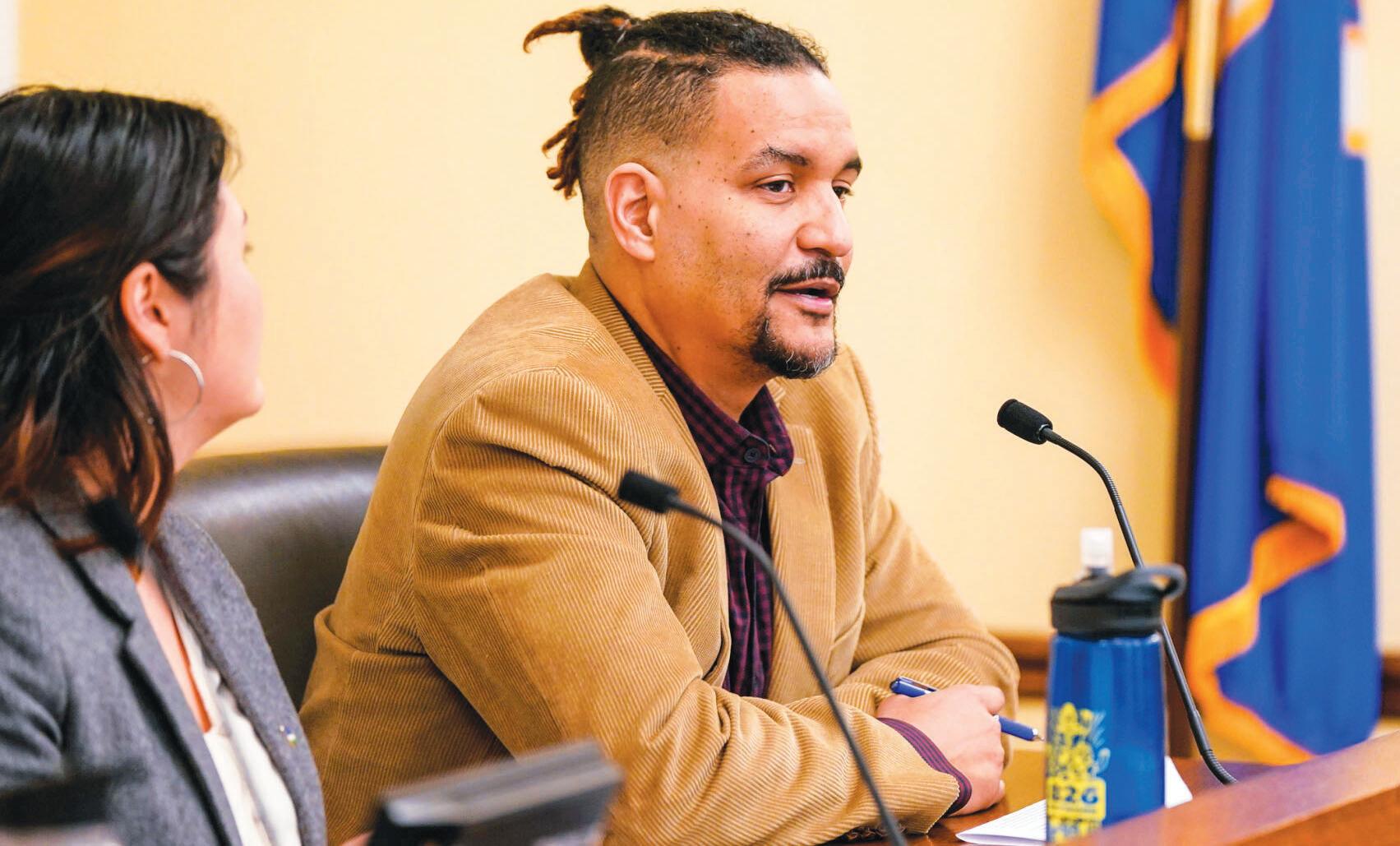
The House Education Policy Committee approved the bill Tuesday, sending it to the House Education Finance Committee, as amended, via a split-voice vote.
As defined in the bill, ethnic studies “means the critical and interdisciplinary study of race, ethnicity, and indigeneity with a focus on the experiences and perspectives of people of color within and beyond the United States. Ethnic studies analyzes the ways in which race and racism have been and continue to be powerful social, cultural, and political
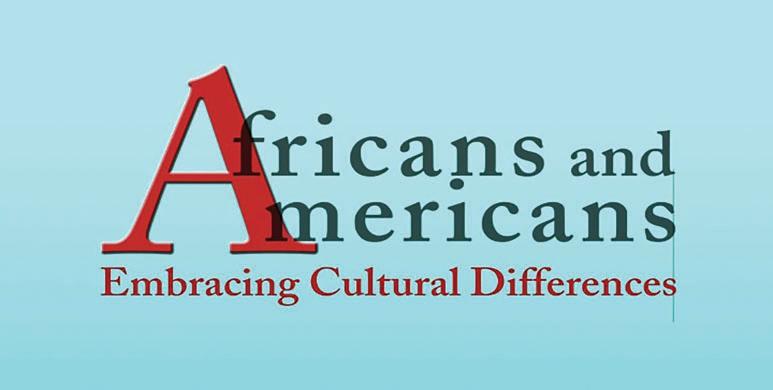
forces, and the connection of race to other groups of stratification, including gender, class, sexuality, religion, and legal status.”
Sencer-Mura’s proposal would mandate the inclusion of ethnic studies as one of many disciplines that schools must teach within the larger umbrella of social studies. Students would be required to complete an ethnic studies course in order to graduate high school, with the requirement first being applied to those beginning ninth grade in the 2025-26 school year.
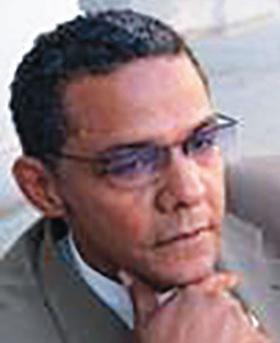
Local districts and charter schools would also have to offer ethnic studies classes in elementary and middle schools by the beginning of the 2027-28 school year.
An Ethnic Studies Working Group would be established to advise the Department of Education on developing a statewide model curriculum. Its 25 members would be comprised of teachers, administrators, public-
Celebrating the vision of President Jimmy Carter
school parents, public-school students and “five community members with a demonstrated commitment to ethnic studies.”
An exact appropriation request has not yet been determined. It will presumably be ready for discussion at the bill’s next committee stop.
The proposal provoked a spirited debate among testifiers and members.
Joselin Navarro Cano didn’t open her first Latino history book until she went to the University of Minnesota. She is now an ethnic studies teacher in Minneapolis and supports the bill wholeheartedly.
“I believe that ethnic studies empowers students to become active learners and citizens,” she said. “Learning about themselves really changes students in a positive way. I believe ethnic studies fosters understanding and empathy, which I believe will create a better world.”
MN SCHOOLS 4
State’s projected budget surplus holds steady at $17.5 billion
By Rob Hubbard
Normally, $100 million would be considered quite a chunk of change. But, in the context of Minnesota’s projected budget surplus, it seems the proverbial drop in the bucket.
Minnesota Management and Budget officials revealed the February budget forecast Monday, and the numbers aren’t that different from what was projected in November. Then, it was $17.6 billion. Now, it’s expected to be in the area of $17.5 billion for the next biennium, which begins July 1, 2023.
If it weren’t for a new state law that requires inflation to be accounted for in both sides of budget projections, the surplus would be even larger, for inflation is expected to remove $1.4 billion from the state’s bottom line.

“This is amazingly close to what we predicted in our last forecast,” said Jim Schowalter, the commissioner of Minnesota Management
and Budget. “In December, I suggested that the ups and downs of the state budget were starting to get a little less extreme. I’m happy to say that this forecast confirms that expectation. The economy is stable and the budget outlook is very good.”

A lot of the optimism seems to stem from a rosier national outlook. State Economist Laura Kalambokidis attributed much of the good news to improvement in the U.S. economic outlook, with lower inflation and a milder recession than previously expected.
The state’s chief macroeconomic consultant is a firm called IHS, and it expects real gross domestic product growth in the U.S. to average 1.8% annually from 2024 through 2027, a slight rise from the 1.7% average annual rate projected in the November forecast.
“IHS expects a mild recession,” Kalambokidis said. “A recovery is expected to begin in the third quarter of this year.”

She added that IHS expects inflation to slow this year while the Federal Reserve institutes two more interest rate increases to go with the seven last year and the one so far in 2023.
Taking things down to a statewide level, most of the projected surplus is left over

from the current biennium. But revenues from income and corporate franchise taxes are up over previous estimates. Looking further down the road, revenues are forecast to exceed state spending through fiscal year 2027.
By Roberto Fonts CEO of Dialog-One
As a Cuban immigrant who arrived in Florida during the Mariel Boatlift of 1980, I can attest to the profound impact of President Carter’s policies on our lives. His swift response to our arrival was a lifeline for the 125,000 Cuban refugees who sought safety and opportunity in the United States.

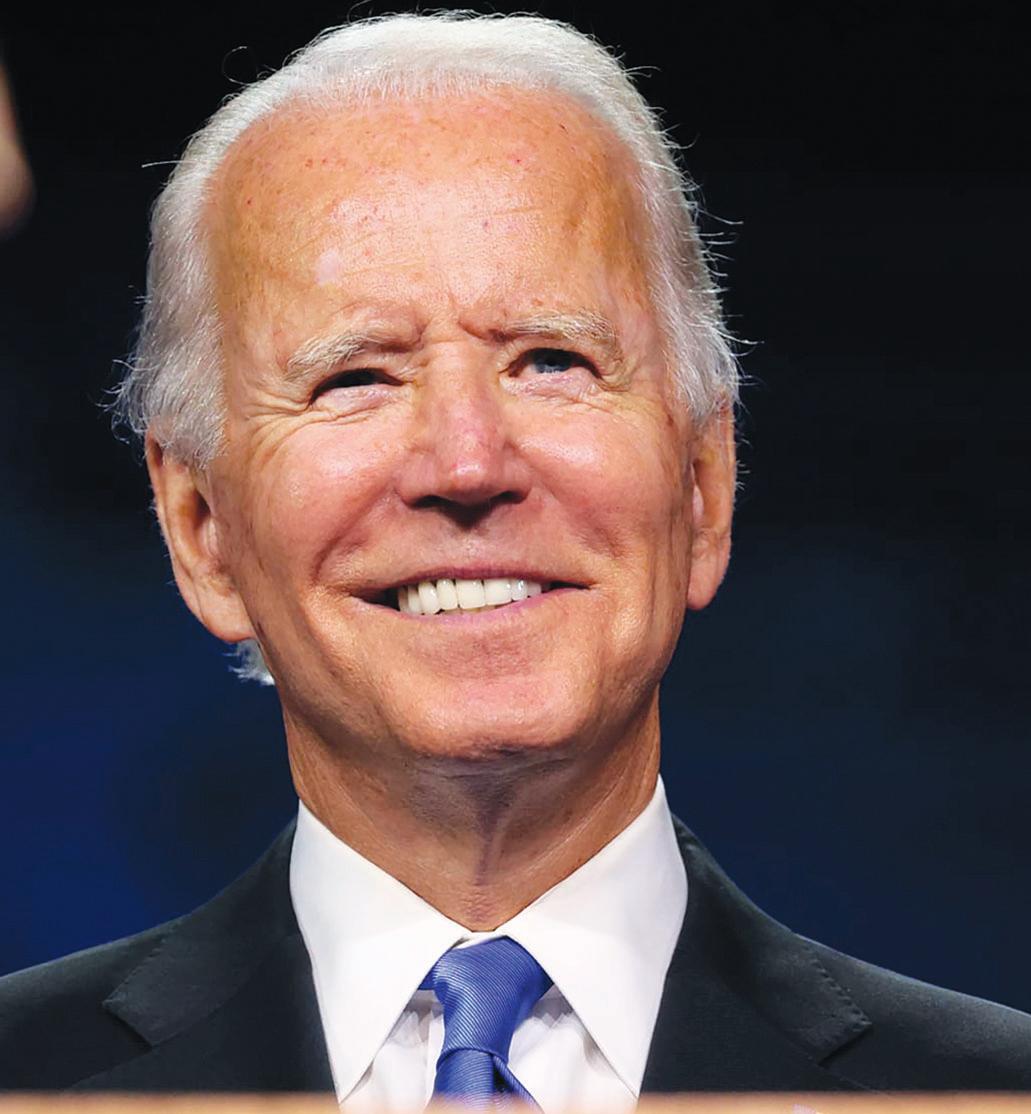
President Carter understood the immediate need for assistance and created a
plan of action that allowed us to enter the country quickly and safely. His compassion and selflessness were evident in his commitment to providing refuge for those who had lost everything in Cuba. His actions were not without challenges, as the influx of refugees created a burden on public resources and cultural tensions with the American residents of south Florida. However, President Carter remained steadfast in his dedication to helping us start our new lives. Through grants towards education programs and job training programs, President Carter gave us the tools we needed to settle down quickly
Mayor, Atlanta, Georgia
By Andre Dickens
Atlanta has a proud legacy as the cradle of the civil rights movement. Throughout our history, Atlantans from Martin Luther King, Jr. to the trailblazers of Sweet Auburn not only helped birth the modern movement to create justice for all but had a laser focus on economic empowerment for everyone
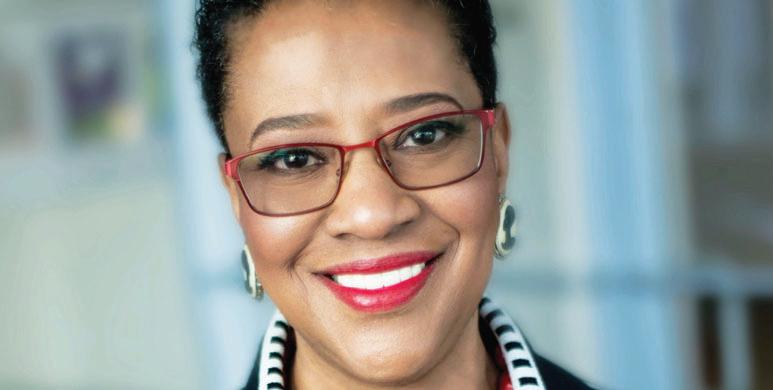
When I ran for mayor, I made a commitment to end
the tale of two cities in Atlanta. I promised to fight for an economy that grew in a balanced way, so that workers could get trained for family-sustaining jobs, small businesses could participate in our city’s growth and all of Atlanta could rise together. More plainly, I wanted to ensure that Atlantans from all backgrounds have a shot at fully participating in Atlanta’s economy. Atlanta is one of the most diverse cities in America, so the economic mobility of all Atlantans is of extraordinary importance to me. It matters to President Joe Biden, too. In fact, President Biden and
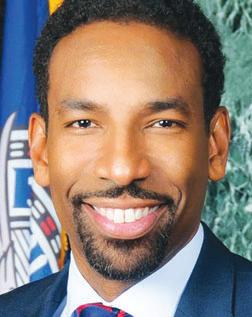
insightnews.com Insight News •March 6 2023 - March 1 2 2023 March 6, - 12, 2023• Page 3
CARTER 4
Renée Jones Schneider/Star Tribune via AP
Minnesota Gov. Tim Walz speaks at a news conference on the Minnesota economic and budget forecast in St. Paul, Minn., Monday, Feb. 27, 2023.
gettyimages
President Joe Biden
photo/Catherine Davis
Brian Lozenski, an associate professor at Macalester College, testifies before the House Education Policy Committee Feb. 28 in support of a bill to establish and ethnic studies requirement in Minnesota schools.
Mariel
Boatlift-A lifeline to Cubans
OP-ED: President Biden is investing in America’s underserved communities BIDEN 6 BUDGET 6
Guest Commentary
Photo/Franklin Reyes Former President Jimmy Carter waves to journalists after visiting the Belen convent in Old Havana, Cuba, Tuesday March 29, 2011. Carter arrived Monday with his wife Rosalynn for a three-day stay on the island. Carter also visited Cuba in 2002, and is the only former U.S. president to do so since the 1959 revolution.
House Session Daily Insight News Insight News Vol 50 No 10• The Journal For Community News, Business & The Arts • insightnews com Vol. 50 No. 10• The Journal For Business & The Arts • insightnews.com March 6, 2023 March 2023 - March 1 2, 2023 - March 12, 2023 I N S I G H T N E W S I S A U D I T E D B Y T H E A L L I A N C E F O R A U D I T E D M E D I A T O P R O V I D E O U R A D V E R T I S E R P A R T N E R S W I T H T H E H I G H E S T L E V E L O F M E D I A A S S U R A N C E INSIGHT NEWS IS AUDITED BY THE ALLIANCE FOR AUDITED MEDIA TO PROVIDE OUR ADVERTISER PARTNERS WITH THE HIGHEST LEVEL OF MEDIA AS SURANCE. Sports “Pay It Forward!” PAGE 5 Review Embracing Cultural Differences PAGE 7
AP
By Steve Abrams
Legacy of Wounded Knee occupation lives on 50 years later
By Kalle Benallie, ICT
WOUNDED KNEE, S.D.
(AP) — Madonna Thunder Hawk remembers the firefights.
As a medic during the occupation of Wounded Knee in early 1973, Thunder Hawk was stationed nightly in a frontline bunker in the combat zone between Native American activists and U.S. government agents in South Dakota.
“I would crawl out there every night, and we’d just be out there in case anybody got hit,” said Thunder Hawk, of the Oohenumpa band of the Cheyenne River Sioux Tribe, one of four women assigned to the bunkers.
Memories of the Wounded Knee occupation — one in a string of protests from 1969 to 1973 that pushed the American Indian Movement to the forefront of Native activism — still run deep within people like Thunder Hawk who were there.
Thunder Hawk, now 83, is careful about what she says today about AIM and the occupation, but she can’t forget that tribal elders in 1973 had been raised by grandparents who still remembered the 1890 slaughter of hundreds of Lakota people at Wounded Knee by U.S. soldiers.
“That’s how close we are to our history,” she told ICT recently. “So anything that goes on, anything we do, even today with the landback issue, all of that is just a continuation. It’s nothing new.”
Other feelings linger, too, over the tensions that emerged in Lakota communities after Wounded Knee and the virtual destruction of the small community. Many still don’t want to talk about it.
But the legacy of activism lives on among those who have followed in their footsteps, including the new generations of Native people who turned out at Standing Rock beginning in 2016 for the pipeline protests.
“For me, it’s important to acknowledge the generation before us — to acknowledge their risk,” said Nick Tilsen, founder of NDN Collective and a leader in the Standing Rock protests, whose parents were AIM activists. “It’s important for us to honor them. It’s important for us to thank them.”
Akim D. Reinhardt, who wrote the book, “Ruling Pine Ridge: Oglala Lakota Politics from the IRA to Wounded Knee,” said the AIM protests had powerful social and cultural impacts.
“Collectively, they helped establish a sense of the permanence of Red Power in much the way that Black Power had for African Americans, a permanent legacy,” said
Reinhardt, a history professor at Towson University in Towson, Maryland.
“It was the cultural legacy that racism isn’t OK and people don’t need to be quiet and accept it anymore,” he said. “That it’s OK to be proud of who you are.”
A series of events in South Dakota in recent days recognized the 50th anniversary of the occupation, including powwows, a documentary film showing and a special honor for the women of Wounded Knee.
‘THUNDERBOLT’
OF PROTEST
The occupation began on the night of Feb. 27, 1973, when a group of warriors led by Oklahoma AIM leader Carter Camp, who was Ponca, moved into the small town of Wounded Knee. The group took over the trading post and established a base of operations along with AIM leaders Russell Means, of the Oglala Sioux Tribe; Dennis Banks, who was Ojibwe; and Clyde Bellecourt, of the White Earth Nation. Within days, hundreds of activists had joined them for what became a 71-day standoff with the U.S. government and other law enforcement.
It was the fourth protest in as many years for AIM. The organization formed in the late 1960s and drew international attention with the occupation of Alcatraz in the San Francisco Bay from 1969-1971. In 1972, the Trail of Broken Treaties brought a cross-country caravan of hundreds of Indigenous activists to Washington, D.C., where they occupied the U.S. Bureau of Indian Affairs headquarters for six days.
Then, on Feb. 6, 1973, AIM members and others gathered at the courthouse in Custer County, South Dakota, to protest the killing of Wesley Bad Heart Bull, who was Oglala Lakota, and the lenient sentences given to some perpetrators of violence against Native Americans. When they were denied access into the courthouse, the protest turned violent, with the burning of the local chamber of commerce and other buildings.
Three weeks later, AIM leaders took over Wounded Knee.
“It had been waiting to happen for generations,” said Kevin McKiernan, who covered the Wounded Knee occupation as a journalist in his late 20s and who later directed the 2019 documentary film, “From Wounded Knee to Standing Rock.”
“If you look at it as a storm, the storm had been building through abuse, land theft, genocide, religious intoleration, for generations and generations,” he said. “The storm built up, and built up and built up. The American Indian Movement
INSIGHT NEWS
www.insightnews.com
Insight News is published weekly, every Monday by McFarlane Media Interests.
Editor-In-Chief Al McFarlane
Publisher Batala-Ra McFarlane
Associate Editor & Associate Publisher


B.P. Ford
Culture and Education Editor Dr. Irma McClaurin, PhD.
Associate Editors Afrodescendientes
Jesús Chucho Garcia
Mestre Yoji Senna DaBahia
Columnist Brenda Lyle-Gray
Book Review Editor W.D. Foster-Graham
Sports Editor Leahjean M. Denley
Content & Production Manager Sunny Thongthi Yang
Distribution/Facilities
Manager Charles Royston
Receptionist
Lue B. Lampley
Intern Naomi Thomson
Photography
Uchechukwu Iroegbu Lou Michaels Roy Lewis - Washington D.C.
Artist Donald Walker
Contact Us: Insight News, Inc.
Marcus Garvey House 1815 Bryant Ave. N. Minneapolis. 55411 Ph.: (612) 588-1313
Fax: (612) 588-2031

Member: Minnesota Multicultural Media Consortium (MMMC) Minnesota Newspaper Association (MNA)

National Newspaper Publishers Association (NNPA)

Postmaster: Send address changes to McFarlane Media Interests, Marcus Garvey House 1815 Bryant Avenue North, Minneapolis,
photo/Kalle Benallie
Madonna Thunder Hawk, 83, sits in her home near Rapid City, S.D., on Feb. 9, 2023. She was one of the four women medics during the occupation of Wounded Knee, which started on Feb. 27, 1973 and ended May 8, 1973. “I would crawl out there every night, and we’d just be out there in case anybody got hit,” she recalls.

was simply the thunderbolt.” The takeover at Wounded Knee grew out of a dispute with Oglala Sioux tribal leader Richard Wilson but also put a spotlight on demands that the U.S. government uphold its treaty obligations to the Lakota people.
By March 8, the occupation leaders had declared the Wounded Knee territory to be the Independent Oglala Nation, granting citizenship papers to those who wanted them and demanding recognition as a sovereign nation.
The standoff was often violent, and supplies became scarce within the occupied territory as the U.S. government worked to cut off support for those behind the lines. Discussions were ongoing throughout much of the occupation, with several government officials working with AIM leaders to try and resolve the issues.
The siege finally ended on May 8 with an agreement to disarm and to further discuss the treaty obligations. By then, at least three people had been killed and more than a dozen wounded, according to reports.
Two Native men died. Frank Clearwater, identified as Cherokee and Apache, was shot on April 17, 1973, and died eight days later. Lawrence “Buddy” Lamont, who was Oglala Lakota, was shot and killed on April 26, 1973.
Another man, Black activist Ray Robinson, who had been working with the Oglala Sioux Civil Rights Organization, went missing during the siege. The FBI confirmed in 2014 that he had died at Wounded Knee, but his body was never recovered. A U.S. marshal who was shot and paralyzed died many years later.
Camp was later convicted of abducting and beating four postal inspectors
MN Schools
revolutionaries and official tribal governments coming together, too,” Tilsen said. “I think that Standing Rock in particular actually reached way further than Wounded Knee because of how the issue was framed around ‘water is life.’” Alex Fire Thunder, deputy director of the Lakota Language Consortium, said the occupation of Wounded Knee and other activism helped revitalize Indigenous languages and cultures. His mother was too young to have participated in the occupation but he said she remembered visits from AIM members in the community.
photo/Kalle Benallie
The Wounded Knee Memorial, which marks the site of the massacre of hundreds of Lakota people by U.S. soldiers in 1890, is seen on Feb. 10, 2023, in Wounded Knee, S.D. A ceremony marking the 50 years since the occupation of Wounded Knee by American Indian Movement activists will be held at the site on Feb. 27, 2023, after four days of events leading up to the anniversary.
during the occupation and served three years in federal prison. Banks and Means were indicted on charges related to the events, but their cases were dismissed by a federal court for prosecutorial misconduct.
Today, the Wounded Knee National Historic Landmark identifies the site of the 1890 massacre, most of which is now under joint ownership of the Oglala Sioux and Cheyenne River Sioux tribes.

The tribes agreed in 2022 to purchase 40 acres that included the area where most of the carnage took place in 1890, the ravine where victims fled and the area where the trading post was located.
The purchase, from a descendant of the original owners of the trading post, included a covenant requiring the land to be preserved as a sacred site and memorial without commercial development.
And though internal tensions emerged in the AIM organization in the years after the Wounded Knee occupation, AIM continues to operate throughout the U.S. in tribal communities and urban areas.
In recent years, members participated in the Standing Rock protests and have persisted in pushing for the release from prison of former AIM leader Leonard Peltier, who was convicted of two counts of first-degree murder despite inconsistencies in the evidence in the deaths of two FBI agents during a shootout in 1975 on the Pine Ridge Indian Reservation.
A NEW GENERATION
Tilsen, now president and chief executive of NDN Collective, an Indigenousled organization centered around building Indigenous power, traces the roots of his activism to Wounded Knee. His parents, JoAnn Tall and Mark Tilsen, met at Wounded Knee, and he
praises the women of the movement who sustained the traditional matriarchal system during the occupation.
“I grew up in the American Indian Movement,” said Tilsen, a citizen of the Oglala Lakota Nation. “It wasn’t a question about what you were fighting for. You were raised up in it. In fact, if you didn’t fight, you weren’t going to live.”
Tilsen credits AIM and others for most of the rights Native Americans have today, including the ability to operate casinos and tribal colleges, enter into contracts with the federal government to oversee schools and other services, and religious freedom.
He said the movement showed the world that tribes were sovereign nations and their treaties were being violated. And when AIM and spiritual leaders such as Henry Crow Dog, Leonard Crow Dog and Matthew King joined the fight, it became intergenerational.
“It became a spiritual revolution,” he said. “It also became a fight that was about human rights. It became a fight that was about where Indigenous people aren’t just within the political system of America, but within the broader context of the system; of the world.”
Tilsen appreciates that his parents were willing to participate in an armed revolution to achieve one of their dreams of establishing KILI radio station, known as the “Voice of the Lakota Nation,” which began operating in 1983 as the first Indigenous-owned radio station in the United States.
The Dakota Access Pipeline protest in 2016 became a defining moment for him and his brother. They had wondered, he said, what would be their Wounded Knee?
“What made it so powerful and what made it different was that you actually had grassroots organizers and
“The whole point of AIM, the American Indian Movement, was to bring back a sense of pride in our culture,” Fire Thunder, Oglala Lakota, told ICT.
FUTURE GENERATIONS
For Thunder Hawk, the issues became her lifelong work rather than momentary activism. She joined AIM in 1968 and participated in the occupation at Alcatraz, the BIA headquarters, the Custer County Courthouse and Wounded Knee, as well as the Standing Rock pipeline protest in 2016. She said work being done today by a new generation is a continuation of the work her ancestors did.
“That’s why we were successful in Indian Country, because we were a movement of families,” she said. “It wasn’t just an age group, a bunch of young people carrying on.”
She hopes her legacy will live on, that her greatgreat-grandchildren will see not just a photo of her but know what she sounded like and the person she seemed to be.
It’s something that she can’t have when she looks at a photo of her paternal great-grandparents.
“Hopefully that’s what my descendants will see, you know?” she said. “And with the technology nowadays, they can press a button, maybe, and it’ll come up.”
Frank Star Comes Out, the current president of the Oglala Sioux Tribe, also believes it’s time for the previous generation’s work to be recognized.
Some of his family members strongly supported AIM, including his mother and father. He said it’s important to fight for his people, who survived genocide. “That’s why I support AIM, not only on a family level,” he said. “I have a lot of pride in who I am as a Lakota. … Times (have) changed. Now I’m using my leadership to help our people rise, to give them a voice. And I believe that’s important for Indian Country.” ICT producer Stewart Huntington, based in Colorado, contributed to this report.
From 3 Carter
In contrast, a consortium of organizations representing school boards and administrators offered written testimony criticizing the addition of ethnic
From 3
and confidently to begin our new lives. He ensured that we had access to essential services
studies as a requirement for high school graduation. The letter notes that the department’s proposed updates to the social studies standards include language referencing ethnic studies, while also maintaining that “curriculum decisions are best made at the local level.” These concerns were echoed by Rep. Peggy
like healthcare and welfare benefits, which were critical to our survival in a new country. His policies helped us start a new life with hope for the future, something many of us had lost amidst the turmoil back home or during our perilous journey across the sea. His
CONSERVATION OFFICER
The Minnesota Department of Natural Resources is seeking conservation officer candidates. Conservation officers are fully licensed peace officers who work to protect Minnesota’s natural resources and the people who use them. Previous law enforcement experience is not necessary, but you do need at least a two-year degree, a self-starter attitude, and a desire to serve. The deadline to apply is March 31, 2023. For more information, see mndnr.gov/enforcement/careers/index.html
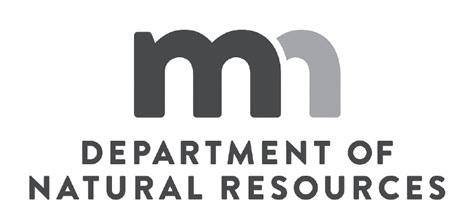
Equal Opportunity Employer
Bennett (R-Albert Lea). While commending Minneapolis on developing a great ethnic studies program that is spreading organically to other schools, she cautioned against overly burdening local districts with more legislative directives.
“The study of cultures and ethnicities is incredibly important,” she said. “But this
decisions saved countless lives and allowed families to stay together despite the political conflict 90 miles from the shores of the United States. His policies created strong communities within Florida, built on a shared struggle for freedom and opportunity.
President Carter’s policies allowed me and thousands of other refugees to build a new life in America and contribute to our new home, many of us becoming entrepreneurs and productive members of society. The impact of his decision forty-three years ago is still felt today, and his legacy as a champion for human rights and justice inspires me to
goes too far in the mandating. Let’s lead by showing how instead of mandate.” Sencer-Mura countered that she doesn’t see her proposal as a mandate – rather, she sees it as ensuring access to this field of study for all Minnesota students.
fi
ght for those who are not heard or understood. As the CEO of Dialog-One, my purpose is to provide high-quality human translation & trans-creation services in over 200 languages to help refugees like me settle into their new country. We do this work in support of professional service providers such as teachers, doctors, lawyers, and business owners to communicate effectively with immigrant families and business around the world. As a Cuban immigrant, I am forever grateful to President Carter for his compassion, generosity, and leadership. His work will continue to produce social justice for generations to come.
Page 4 • March 6 2023 - March 1 2 2023 6, - 12, 2023• Insight News insightnews.com
undefined
M INNESOTA D EPARTMENT OF N ATURAL R ESOURCES
“Pay It Forward!”
opportunities as I began my pursuit of an MBA, there were those who became my mentors in those business and academic spaces that noticed the values of my acumen and pushed me out of my comfort zone. One such person that I will highlight now is Linda B. Keene, MBA.

 By Leahjean M. Denley, MBA
By Leahjean M. Denley, MBA
PT 1
Hey there! It’s your homegirl, CoachLeahTM, and let me tell you I’m bursting at the seams at the thought of being able to celebrate events andaccomplishments,aswellas sharethoughtprovokingstories. Thisisadreamcometrue.
Over the next coming weeks, we will celebrate Twin Cities Excellence in Sports and take a look at a few notable former athletes currently residing in the Twin Cities metroplex and making a communityimpactthroughtheir careersand/orphilanthropy.
Credited to Mark Twain and Helen Burns, it’s been said and requoted in various ways by several prominent theologians, hall-offamecoaches,andotherthought leaders that the two most importanteventsinyourlifeare #1–Thedayyouwerebornand #2 – The moment you realized your purpose. I would suggest we add #3 – The day you’re abletoactualizeandcurateyour purpose in a meaningful way thatblessesandhonorsthelives ofothers.
I am committed daily, to being my best self and in service to others. Back in 2000, when we launched the Diamonds in the Rough Showcase and Celebrity Shootout I demonstrated my commitment[agenuineattempt] to giving back and honoring the community members that embraced me as a teen and young adult. What I did not acknowledge at that time, but what most defi nitely made a huge impact, was the fact that while I was seamlessly moving into corporate and non-profit
Keene, one of my personal and professional mentors – former Vice President at American Express Financial Services – would often invite me to meet with her at her office in the downtown Minneapolis. These meetings [like mini seminars full of teachable moments] were rarely no longer than one hour and exposed me my first example of a successfully female led Fortune 100 corporate environment. What really sticks out in my memory was how effectively she communicated with me in our mentee/mentor relationship. There was always a practical application for my next steps after each session with Mrs. Keene.
During an advisory and resume writing session shortly after I moved back home after competing in the NCAA Tournament and exhausting my college eligibility, I was a bit frustrated trying to list skills, accomplishments, and a solid work history to date. Sensing my angst, Keene said the following to me in the most “matter of fact” yet nurturing tone;
“Do not rest on your past laurels.”
The so called “accomplishments” I listed heavily outweighed my work history list – for obvious reasons.

Don’t get me wrong, we should always be extremely proud of our accolades and achievements from the past – it is what lays the foundation and often helps open doors for future opportunities However, once we make it through the threshold, we must build upon the foundation continuously– utilizing the skills learned through athletics and applying them to new goals and
achievements.
My questions

- What type of jobs can I apply for? What career do I pursue? What do I write down on paper? Athletics had played such a primary role in majority of my life up until then. The answer - that I have grown to realize - is that sports will be one chapter in an anthology of one’s life experiences. Keene’s advisement was meant to inspire me to use the same focus and passion in my professional and service leadership spaces that I had formerly used to compete at a high level in athletics. In a very recent conversation where I shared how I am immensely grateful for her continued mentorship, Keene reminded me that in regard to mentoring, we must continue to “pay it forward.” I felt a sense of unexplainable joy when Keene added, “Which is what you have been and are doing, Leah,” before ending our conversation.
I accepted her compliment even though it triggered my imposter syndrome. I am beginning to accept compliments a bit more graciously at this stage of my life. I challenge you all to do the same. Especially if your body of work can validate the kind words being said about you. You ARE worthy!
Celebrating Twin
Cities Excellence in Sports will be ongoing here at Insight News –Sports. Check back often as we share individuals who have moved past their athletics participation and achievements and into fulfilling careers and commitments to “pay it forward.” Will your favorite hometown former athlete make the list? Stay tuned for “Pay It Forward!” PT 2, in Insight News-Sports – home to CoachLeah’s After the Whistle Remember to find Conversations with Al
Born With Teeth
Now – April 2 Tickets start at $20 for select performances.
A quick-witted faceoff Fresh from its critically acclaimed world premiere at the Alley Theatre, Born With Teeth cleverly imagines a backbar meeting between two writing greats: Kit Marlowe and William Shakespeare.



HEALTH EQUITY ISN’T OPTIONAL.
The status quo in healthcare has left far too many Minnesotans behind – particularly people of color, LGBTQIA+ communities, those living in rural areas, and the economically disadvantaged. We are taking action across our health system to do better and be better for our patients, for our employees, and for the communities we serve.
Bringing clinical services into neighborhoods to expand access
Advancing our anchor mission initiatives – local hiring, local purchasing, local investing, and leading and serving locally
Addressing social risk factors through food access and housing programs and community education and outreach
To learn more:
insightnews.com Insight News •March 6, 2023 - March 12, 2023 March 6, 2023• Page 5
McFarlane on Facebook, LinkedIn and subscribe to Insight News on YouTube. CoachLeah’s After the Whistle –The Vodcast is coming soon! Sincerely yours in Sports and Service! CoachLeahTM Follow me on Twitter and Instagram @CoachLeah40 or at www.CoachLeah.net
Linda B. Keene, MBA
Sports Editor
Fairview Health Services is honored to be recognized as one of America’s Greatest Workplaces for Diversity
There’s still much work to do, but we remain committed to creating a healthier, more equitable future for all.
2384MHFVLocalCampaign-NewsweekDiversity-InsightNewsPrint_R1.indd1 2/16/2312:14PM 612.377.2224 guthrietheater.org by
LIZ DUFFY ADAMS directed by ROB MELROSE
The Guthrie Theater presents an Alley Theatre production of
ROUTEDRIVER


remain focused on the issues
Of the projected $17.5 billion surplus, $12.5 billion could be characterized as “onetime money,” while $5 billion is part of the state’s structural balance, i.e. money available for recurring budget outlays. But Kalambokidis warned of possible changes that could alter the state economy’s path. Inflation could rise more than expected, perhaps inspiring the Federal Reserve to raise interest rates even further. There could be changes in federal monetary policy, as well as volatility in corporate profits and capital gains. And the debt ceiling impasse in Congress could cause a much deeper
recession if the U.S. defaults on its financial obligations.
“We’ll have to be careful,” Schowalter said.
“But, looking forward, we still see a rough parity between our revenue growth and our spending growth. It’s a great position for the state to be in.”
“This is good news for Minnesotans,” said Gov. Tim Walz. “Having a highly educated workforce has allowed us to create an economy that allowed us to weather some of the most challenging times in our nation’s history over the last three years.”

The governor pointed to annual job growth in the state as being one of the most important facets of the forecast.
House Speaker Melissa Hortman (DFLBrooklyn Park) spoke to how she sees her caucus responding to the forecast.
“House DFLers
all zip codes have access to apprenticeships and goodpaying job opportunities.




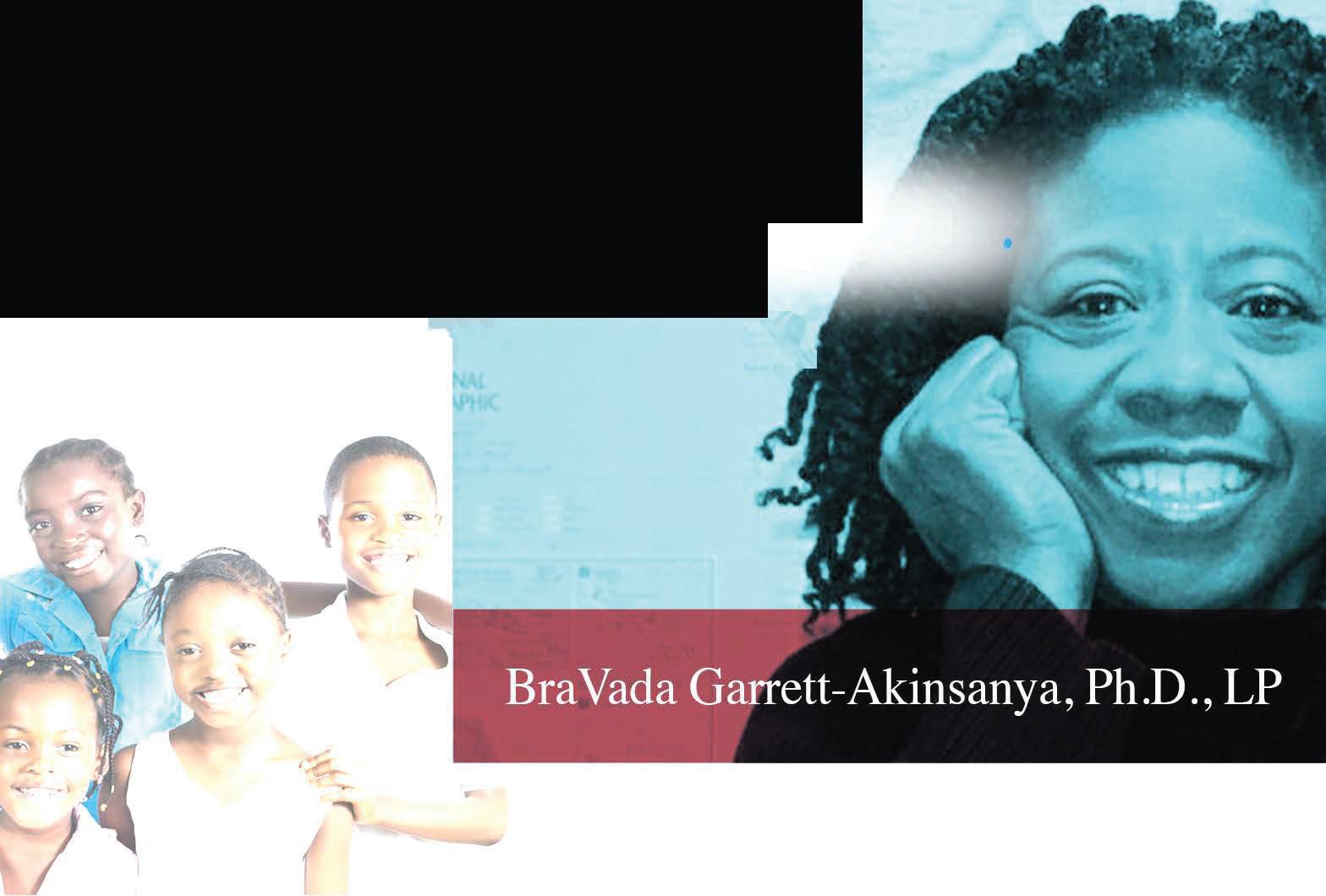

Minnesotans across the state value and care about: investing in public education, making health care more affordable, and building an economy that works better for everyone,” she said in a statement. “Minnesota is a great state, but it can be even better, and our state’s prosperity can and should reach more people.” In her statement on the forecast, House Minority Leader Lisa Demuth (R-Cold Spring) pointed to its inclusion of inflation. “While inflation hasn’t hurt government tax revenue, it has significantly hurt Minnesotans’ buying power,” she said. “It’s time to get serious about giving the surplus back to the taxpayers so they can afford their lives in the face of historic inflation driving up the cost of basic necessities.”
Vice President Kamala Harris have proven this time and again by delivering federal resources. Thanks to the historic Infrastructure Investment and Jobs Act, Inflation Reduction Act, American Rescue Plan, and executive orders signed by the president, historic investments are being made in cities like Atlanta – and everybody has a shot at participating and benefiting from these investments.
This month, Vice President Harris joined me in Atlanta to celebrate federal dollars coming to electrify Atlanta-area school buses. We’re moving away from the hazardous fumes of diesel school buses, which are disproportionately used in underserved communities, toward cleaner energy that’s better for the environment and better for our children’s health. And with these investments, we’re ensuring Atlantans in
These investments are just the beginning when it comes to ensuring all of Atlanta participates in our economy. Within days of taking office, President Biden signed an executive order which requires the federal government to live up to the Justice 40 Initiative. Justice 40 is an effort to ensure that at least 40 percent of certain federal investments go to communities that have faced a disproportionate burden of environmental harms and pollution. That means more improvements and more jobs in our communities.
Plus, thanks to the Biden-Harris Administration working alongside Sen. Ossoff, Sen. Warnock and Rep. Williams, Atlanta will receive $30 million to improve safety along Pryor Street and Center Avenue through the Safe Streets and Roads for All Program. This program will allow the city to hire workers from our communities to build protected bike lanes and pedestrian facilities, making the area safer
and more accessible while connecting the Southside and the Southside Beltline. This is in addition to $40 million delivered to upgrade HartsfieldJackson Atlanta International Airport and millions of American Rescue Plan funds the City has already put to work on pre-arrest diversion services, combatting homelessness, job training and so much more. We have a lot more work to do before every family in Atlanta has the same access to economic mobility, but change is happening right now – and a lot of that progress is due in large part to the priorities of the Biden-Harris Administration. Here’s the bottom line: as mayor, my job is to show up and deliver. President Biden and Vice President Harris make that job easier – they are providing the resources to create jobs, contract with women and minority-owned firms, and make real improvements in our communities. In the cradle of the civil rights movement, we’re benefitting from allies in the White House who are laser focused on economic empowerment.
Page 6 • March 6 2023 - March 1 2 2023 6, - 12, 2023• Insight News insightnews.com
Budget From 3 3
Biden From 3 PARTTIME DISTRIBUTION
Onetotwodaysperweek. $15perhour. Validdriver'slicenserequired. Calltoapply 612-695-0417 WEARE HIRING
Embracing Cultural Differences

 By: W.D. Foster-Graham Book Review Editor
By: W.D. Foster-Graham Book Review Editor
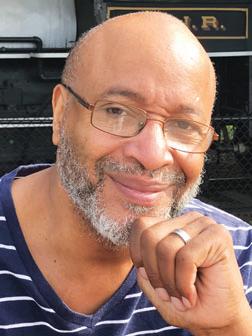
AFRICANS AND AMERICANS Embracing Cultural Differences
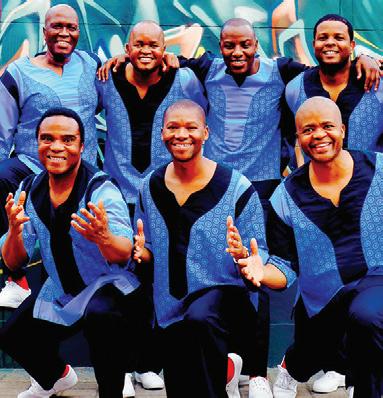
 By Joseph Mbele
By Joseph Mbele
When it comes to culture, there has long been a matter of perception of Americans and those who are African-born. As a native of Tanzania who has lived in Minnesota and Wisconsin, Joseph Mbele offers his personal version of a guide to this ongoing matter in Africans and Americans: Embracing Cultural Differences Step by step, he deconstructs the areas of the two cultures that so often lead to misunderstanding, miscommunication, and/ or judgment. One of the first topics is the difference between African Americans and African-born, since the African-born haven’t lived under the legacy of slavery and American racial politics.
East Africans used the term mzungu when referring to a white person, something that has its roots in colonialism. However, because of the belief that Americans are all rich, the term is also used for African Americans. Cultural differences show up the most in social interactions. Where the African-born are highly social and quick to engage in lengthy conversations, Americans are perceived as standoffish with
strangers unless introduced. Where in African cultures people come and go to other people’s homes and there are always lots of family and neighbors around to interact with, Americans value privacy and set up boundaries to protect it. Parties in America would be considered boring in Africa. Where Americans insist on direct eye contact when speaking to someone, Africans avoid eye contact as a sign of respect.
Mbele takes note of the differing concepts of time and money, the relationship of businesses to the community, matters of hospitality, health, the symbolic and social meaning of food, and personal space. Unlike American culture, African culture is far more comfortable with diversity of body image; plus-sized women are highly desirable, since this denotes “prosperity and general happiness.” Where America is youth-obsessed, old age is valued in Africa.
Mbele makes it clear by the way he writes that there are many cultures on the continent of Africa, just as there are in America, and rather than judge a culture, the best thing to do is to broaden our scope by learning about a culture that is different from our own, which in turn leads to a better understanding for all. Of course, this would be a mutual exchange.
Africans and Americans is available through Amazon and Minnesota Black Authors Expo.
Thank you, Joseph, for sharing a story that stimulates conversation. We can always learn something from everyone we meet.
STRINGS FOR PEACE: SHARON ISBIN w/ Amjad Ali Khan, Amaan & Ayaan Ali Bangash

MAR 15-16
JON CLEARY NOLA Piano Master

MAR 17
JAMECIA BENNETT: A SOULFUL EVENING OF JAZZ, RHYTHM & BLUES


MAR 18
MAR 19
KRASNO/MOORE PROJECT NOLA Organ Funk

MAR 23
CHARLIE PARR Resonator-fueled Folk

MAR
MAR 25
J.E. SUNDE & PIT STOP Original Rock Raconteurs


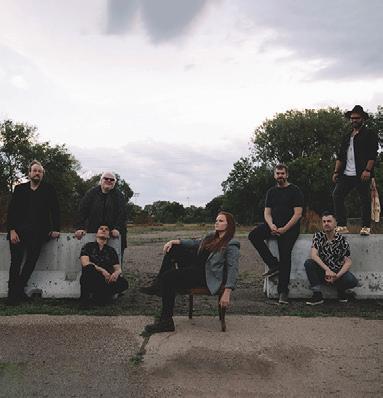
MAR
MAR 27
A cappella



MAR
DANILO PÉREZ, JOHN PATITUCCI, BRIAN BLADE: CHILDREN OF THE LIGHT
MAR 29
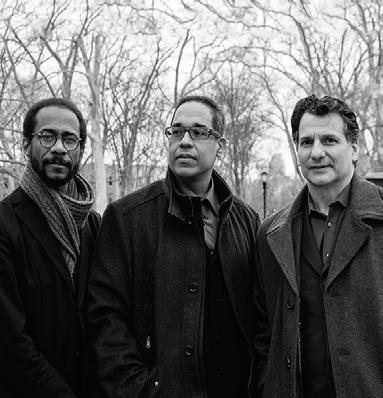
insightnews.com Insight News •March 6 2023 - March 1 2 2023 March 6, - 12, 2023• Page 7
Sharing
Our Stories
612.332.5299 dakotacooks.com 1010 Nicollet Mall Minneapolis, MN SHEMEKIA COPELAND Transcendent Blues Vocals CHRISTIAN MCBRIDE’S NEW JAWN Titan of Modern Jazz MAE SIMPSON BAND w/ special guest Zoofunkyou DESSA SELECTS: 29:11 INTERNATIONAL EXCHANGE CHOIR LADYSMITH BLACK MAMBAZO Soulful South African
MAR 21-22
24
26
28
As we spend more time indoors, here are some important reminders: GET VACCINATED For more information, visit northpointhealth.org/covid Scan this QR code for more vaccine information FOLLOW VACCINATION GUIDELINES GET VACCINATED IN PUBLIC INDOOR SPACES WEAR A MASK IF YOU HAVE SYMPTOMS OR EXPOSURE TEST YOURSELF





















































Page 8 • March 6 2023 - March 1 2 2023 6, - 12, 2023• Insight News insightnews.com

































 By Leahjean M. Denley, MBA
By Leahjean M. Denley, MBA















 By: W.D. Foster-Graham Book Review Editor
By: W.D. Foster-Graham Book Review Editor


 By Joseph Mbele
By Joseph Mbele

























































